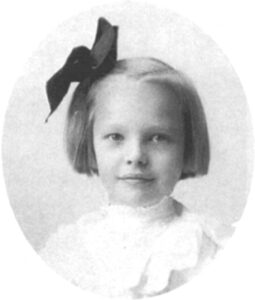Unraveling the Enigma: The Early Life of Amelia Earhart
Introduction 
Amelia Earhart, a name that resonates with courage, determination, and the spirit of adventure, captivated the world with her remarkable achievements as an aviator. Her trailblazing exploits shattered gender norms and paved the way for future generations of women to dream beyond boundaries. But before she became an aviation icon, Amelia’s early life played a pivotal role in shaping the extraordinary woman she would become.
A Childhood of Curiosity
Born on July 24, 1897, in Atchison, Kansas, Amelia Mary Earhart exhibited an inquisitive mind and a thirst for exploration from an early age. Raised in a progressive family, Amelia’s parents encouraged her curiosity and independence, fostering an environment that would later fuel her passion for flying. She was known to be a tomboy, unafraid to explore the outdoors and embrace activities considered unconventional for young girls at the time.
Influence of Family and Education
Amelia’s familial support was a cornerstone of her early development. Her grandfather, Alfred Otis, was a federal judge, while her mother, Amy Otis Earhart, was an advocate for women’s rights and social justice. This familial influence instilled in Amelia a sense of responsibility to challenge societal norms and strive for equality.
Her education at Hyde Park High School in Chicago played a significant role in nurturing her intellect and love for learning. However, her formal education was cut short when her family faced financial difficulties, leading to Amelia working various jobs to support herself and her dreams.
World War I and Nursing
During World War I, Amelia volunteered as a nurse’s aide in Toronto, Canada, attending wounded soldiers and gaining exposure to the medical field. This experience further solidified her determination to make a difference and contribute meaningfully to the world.
The Fateful Flight
Amelia’s introduction to aviation occurred in December 1920, when she attended an airshow in Long Beach, California. A 10-minute flight with pilot Frank Hawks sealed her fate: she knew she had to learn to fly. This decision marked the beginning of her aviation journey, a path that would ultimately define her legacy.
Breaking Barriers
In 1921, Amelia Earhart began flight lessons, demonstrating her tenacity and fearless attitude in a male-dominated field. Just two years later, she set the world record for women’s altitude at 14,000 feet—a testament to her determination and skill. Throughout the 1920s, she consistently broke barriers for female aviators, smashing gender stereotypes and becoming an inspiration to women everywhere.
Amelia Earhart’s early life laid the foundation for her groundbreaking career as an aviator and an advocate for gender equality. Her childhood curiosity, family support, determination, and exposure to unconventional experiences molded her into the extraordinary woman who would go on to redefine what women could achieve.
As we reflect on her life, it’s clear that Amelia Earhart’s journey was not only one of exploration through the skies but also a journey of self-discovery and empowerment. Her legacy continues to inspire individuals to pursue their passions, shatter limitations, and reach for the stars—just as she did on that fateful flight that launched her into the annals of history. Next week we will take a closer look at her flying accomplishments, so until then Be Social, Fly Private!
